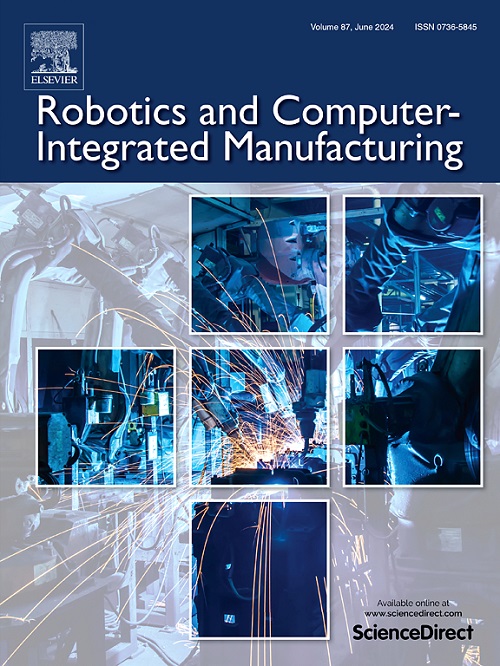KineNN: Kinematic Neural Network for inverse model policy based on homogeneous transformation matrix and dual quaternion
IF 9.1
1区 计算机科学
Q1 COMPUTER SCIENCE, INTERDISCIPLINARY APPLICATIONS
引用次数: 0
Abstract
The modeling and control of a robot manipulator can be challenging considering different robot architectures and different tasks. In this paper, we introduce a novel framework for data based control of robot operating tasks using a novel, invertible neural network called Kinematic Neural Network (KineNN). To this end, we present two KineNN architectures based on the Rigid Body Transformation in the form of either the Homogeneous Transformation Matrix (HTM) or Dual Quaternion (DQ). The KineNN serves two purposes in our approach. First, it acts as the forward kinematic model of a robot within a model based reinforcement learning architecture where the output is the end effector position and orientation of the robot manipulator with given joint angles of the robot. Second, KineNN’s inverted architecture is used within the policy network making the policy network aware of the actual robot architecture, which allows for an disentanglement of robot kinematics and task specific control resulting in improved training performance. Within the approach both policy and model NN share their parameters. The proposed framework was tested and evaluated on a Universal Robot (UR) 5. The results show that the architecture can successfully capture the robot kinematics and predict the world model state. The inverse model with shared parameters within the policy network outperforms a training without this sharing. We further conduct a transfer learning where we modify the arm lengths and number of joints. In this experiment, transferring KineNNs parameters yielded faster convergence in comparison to re-training a model from scratch.
基于齐次变换矩阵和对偶四元数的逆模型策略的运动学神经网络
考虑到不同的机器人结构和不同的任务,机器人机械手的建模和控制是具有挑战性的。在本文中,我们引入了一种新的框架,用于基于数据的机器人操作任务控制,使用一种新的可逆神经网络,称为运动学神经网络(KineNN)。为此,我们以齐次变换矩阵(HTM)或对偶四元数(DQ)的形式提出了两种基于刚体变换的KineNN体系结构。在我们的方法中,KineNN有两个目的。首先,它在基于模型的强化学习体系结构中充当机器人的正运动学模型,其中输出是给定机器人关节角的机器人机械手的末端执行器位置和方向。其次,在策略网络中使用了KineNN的倒置架构,使策略网络了解实际的机器人架构,从而可以解除机器人运动学和任务特定控制的纠缠,从而提高训练性能。在该方法中,策略和模型NN共享它们的参数。所提出的框架在通用机器人(UR) 5上进行了测试和评估。结果表明,该体系结构能够成功地捕捉机器人的运动轨迹并预测世界模型状态。在策略网络中具有共享参数的逆模型优于没有这种共享的训练。我们进一步进行迁移学习,修改手臂长度和关节数量。在这个实验中,与从头开始重新训练模型相比,转移KineNNs参数产生了更快的收敛速度。
本文章由计算机程序翻译,如有差异,请以英文原文为准。
求助全文
约1分钟内获得全文
求助全文
来源期刊
CiteScore
24.10
自引率
13.50%
发文量
160
审稿时长
50 days
期刊介绍:
The journal, Robotics and Computer-Integrated Manufacturing, focuses on sharing research applications that contribute to the development of new or enhanced robotics, manufacturing technologies, and innovative manufacturing strategies that are relevant to industry. Papers that combine theory and experimental validation are preferred, while review papers on current robotics and manufacturing issues are also considered. However, papers on traditional machining processes, modeling and simulation, supply chain management, and resource optimization are generally not within the scope of the journal, as there are more appropriate journals for these topics. Similarly, papers that are overly theoretical or mathematical will be directed to other suitable journals. The journal welcomes original papers in areas such as industrial robotics, human-robot collaboration in manufacturing, cloud-based manufacturing, cyber-physical production systems, big data analytics in manufacturing, smart mechatronics, machine learning, adaptive and sustainable manufacturing, and other fields involving unique manufacturing technologies.

 求助内容:
求助内容: 应助结果提醒方式:
应助结果提醒方式:


